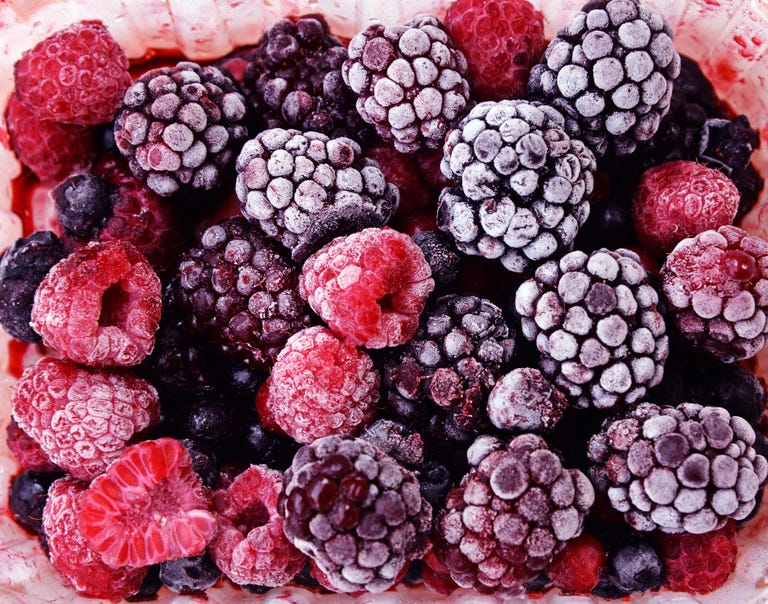

Eating fruits and veggies is a no-brainer year-round, but doesn’t it feel easier to get your fill in the summertime? Bring sweet treats—and their nutrients—into future seasons by using just one tool: your freezer.
The Rules Of Icy Engagement
Pick Your Process
Some foods are naturals in the freezer; others need extra TLC before cooling.
Pack ’em nude:

Getty Images
- Berries: Remove any stems, then freeze whole.
- Chili pepers: Ideal for freezing as is, but if you like less heat, scrape out the seeds beforehand.
- Cherries: Some prefer to pit cherries before freezing, but it’s actually better to do that after they emerge from the freezer. When they defrost, the flesh surrounding the pit weakens, making them easier to pit with your hands.
- Corn: Cobs and kernels can be frozen, as long as you’ll be eating them within a month or two.
- Figs: Freeze whole.
- Tomatoes: Freeze whole; the skins slip right off after defrosting. Short on space?Chop, then freeze in a bag.
Prep first:

Getty Images
- Bell peppers: Thinly slice or chop before freezing. Fans of stuffed peppers can remove stems and scrape out seeds before freezing the halved bell peppers; stuff them while frozen.
- Cucumbers: Thinly slice or chop before freezing. The texture is compromised once frozen, but the flavor is not, so these are great for drinks (DIY spa water), juicing, or smoothies.
- Herbs: Chop herbs and divvy up in an ice cube tray. Top off each cube with olive oil, so it fills the crevices and forces out any air, then freeze. Once frozen,transfer to a bag.
- Melons: Cut melons into cubes or slices, removing the rind, then freeze on a baking sheet.
- Stone fruit (apricots, nectarines, peaches, plums): Slice stone fruit and remove the pit. If you’re making a smoothie, leave the peel on. For pies or tarts, peel and slice before freezing.
- Bananas: Peel them, then freeze whole or chopped into chunks.
Cook first:
The enzymes in some fruits and veggies will continue to break down even when frozen, but heat can halt this process.

Getty Images
- Eggplant: These can be sliced into rounds (eggplant parm) or cut into smaller shapes (pastas and stir-fries); roast before freezing. Cooked eggplant can also be pureed and frozen.
- Green beans: Prep pods the way you’ll most likely use them—whole or cut into bitesize pieces. Blanch, then freeze; you can add them straight to soup or stir-fries sans defrosting.
- Okra: Blanch the pods whole for three to four minutes, then freeze whole or in rounds.
- Summer squash/zucchini: Cut squash into rounds and blanch for three minutes, or, for baked goods, grate and steam for one to two minutes. Thoroughly drain, then freeze and pack for storage. For grated squash, defrost completely, then blot away excess moisture pre-use.
This article originally appeared in the June 2018 issue of Women’s Health magazine. For more great advice, pick up a copy on newsstands now!
Source: Read Full Article